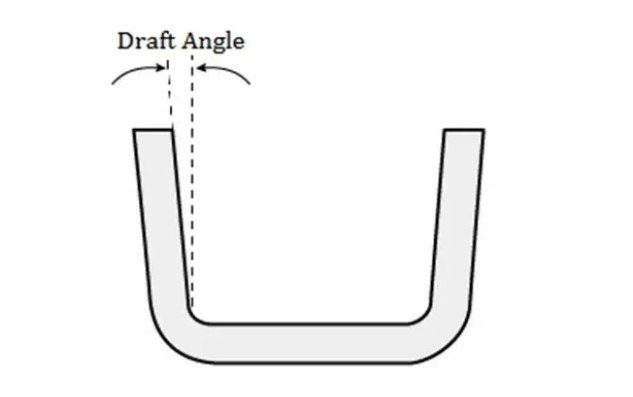Draft angles are slight tapers applied to the vertical walls of a part design in injection moulding. They are essential for ensuring that the part can be easily ejected from the mould without damaging the mould or the part itself. A typical draft angle ranges from 1° to 3°, but this may vary depending on the material, surface texture, and geometry of the part.
Why Draft Angles Are Important:
- Easier Part Ejection:
- As molten plastic cools and solidifies, it tends to shrink slightly and grip the mould. A draft angle reduces the contact area and friction between the mould walls and the part, allowing it to be ejected smoothly.
- Prevents Damage:
- Without sufficient draft, parts may get stuck in the mould, potentially leading to deformation, scuffing, or even breaking the part during ejection.
- Extends Mould Life:
- Easier ejection reduces wear and tear on the mould, extending its service life and reducing maintenance costs.
- Improves Surface Finish:
- Draft angles help maintain consistent surface quality by minimizing the risk of drag marks or scratches caused during part removal.
Factors Influencing Draft Angle Requirements:
- Material Shrinkage: Softer materials or those with high shrinkage (like polypropylene) may require larger draft angles.
- Surface Texture: Rough or textured surfaces require more draft to release cleanly—up to 5° or more.
- Part Geometry: Deep or tall features typically need greater draft.
- Ejection Method: Whether using ejector pins, air, or stripper plates also affects the angle choice.
